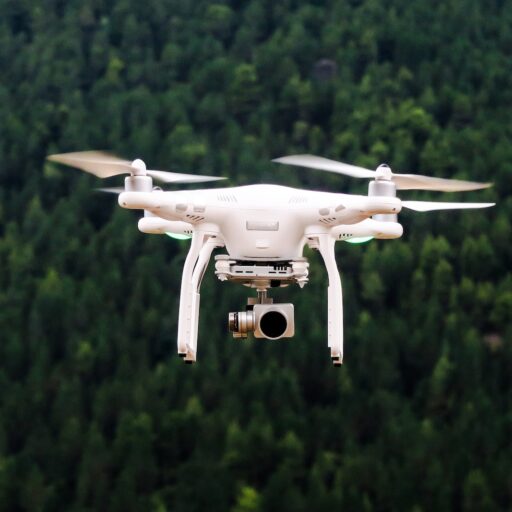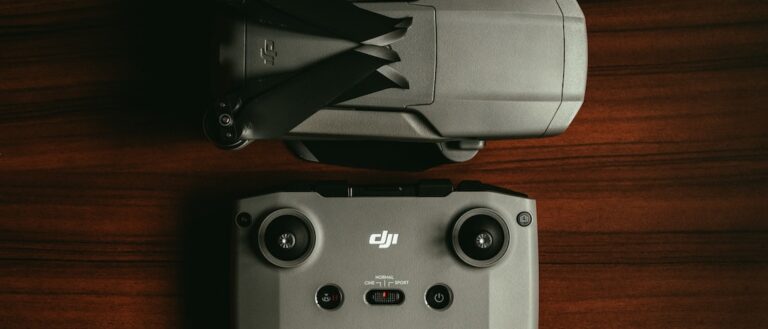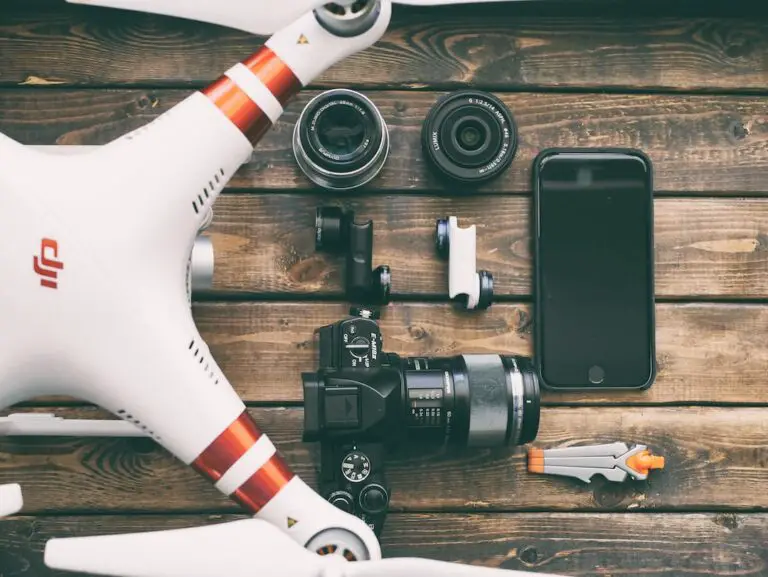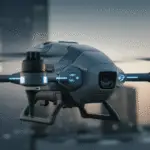Support our educational content for free when you purchase through links on our site. Learn more
Top 15 U.S. Military Drone Manufacturers to Watch in 2025 🚁
Ever wondered who’s behind the cutting-edge drones that give the U.S. military its eagle-eyed advantage? From stealthy high-altitude scouts to AI-powered autonomous wingmen, the world of U.S. military drone manufacturers is buzzing with innovation and fierce competition. In this article, we dive deep into the top 15 drone makers shaping the future of defense, revealing the tech marvels, emerging trends, and ethical debates that make this industry so captivating.
Did you know that military drones accounted for nearly half of the U.S. drone market share in 2022 and are expected to grow exponentially by 2030? But who exactly builds these flying marvels, and what’s next on the horizon? Stick with us as we unravel the players, the tech, and the future of unmanned aerial warfare — plus insider tips from our drone pilot team at Drone Brands™.
Key Takeaways
- Top 15 U.S. military drone manufacturers include giants like Northrop Grumman, General Atomics, Lockheed Martin, and innovative newcomers like Anduril and Shield AI.
- Military drones serve diverse roles: surveillance, precision strikes, electronic warfare, and autonomous swarm operations.
- Emerging tech such as AI, swarm technology, and cybersecurity are revolutionizing drone capabilities.
- The U.S. military’s drone procurement process is complex but ensures cutting-edge systems reach the battlefield.
- Ethical and legal challenges around drone use remain a hot topic in defense circles.
- For enthusiasts and professionals alike, staying informed and exploring career or business opportunities in this sector is a smart move.
👉 Shop top military drone brands:
- Northrop Grumman on Amazon | Northrop Grumman Official
- General Atomics on Amazon | GA-ASI Official
- Lockheed Martin on Amazon | Lockheed Martin Official
Table of Contents
- ⚡️ Quick Tips and Facts: Navigating the U.S. Military Drone Landscape
- 🦅 The Genesis of Unmanned Aerial Systems: A Brief History of U.S. Military Drone Development
- 🛡️ Why U.S. Military Drones Matter: Beyond Just Surveillance and Reconnaissance
- 🚁 Decoding the Drone Landscape: Key Categories of Military UAVs and Their Missions
- 🏭 Who Builds America’s Eyes in the Sky? The Leading U.S. Military Drone Manufacturers
- Northrop Grumman: Global Hawk and Beyond
- General Atomics Aeronautical Systems (GA-ASI): The Predator and Reaper Legacy
- Lockheed Martin: Stealth, Speed, and Advanced UAS Solutions
- Boeing (Insitu): Tactical ISR and Naval Operations
- RTX (formerly Raytheon Technologies): Sensors, Payloads, and Integrated Systems
- AeroVironment: Small UAS for Tactical Edge Operations
- Kratos Defense & Security Solutions: Affordable Mass and Loyal Wingmen
- Textron Systems: Unmanned Aircraft for Diverse Missions
- L3Harris Technologies: ISR and Electronic Warfare Integration
- Anduril Industries: AI-Powered Defense and Counter-UAS
- Shield AI: Nova and Hivemind for Autonomous Flight
- Skydio: Enterprise Drones for Government and Defense
- 🚀 The Innovation Frontier: Emerging Technologies Shaping Military Drone Development
- 🤝 From Concept to Combat: The U.S. Military Drone Procurement Process Explained
- ⚖️ The Ethical and Legal Battleground: Navigating the Complexities of Military Drone Use
- 💡 Beyond the Big Players: Niche Innovators and Future Contenders in U.S. Military UAVs
- 🌍 The Global Impact: How U.S. Military Drone Exports Influence Geopolitics
- 👷♀️ Career Paths in the Drone Industry: Building the Future of Unmanned Systems
- 📈 The Bottom Line: What’s Next for U.S. Military Drone Manufacturing and Defense Innovation?
- 🎯 Conclusion
- 🔗 Recommended Links
- ❓ FAQ: Your Burning Questions About Military Drones Answered
- 📚 Reference Links
Quick Tips and Facts: Navigating the U.S. Military Drone Landscape
To understand the vast and complex world of U.S. military drones, it’s essential to start with some quick tips and facts. As drone pilots at Drone Brands™, specializing in Aerial Adventures with Drones, we’ve compiled a list of must-know information. Check out our article about What Are the Statistics for Drones? 15 Must-Know Facts (2025) for more insights.
Key Statistics
- The U.S. drone market is expected to reach $82.9 billion by the end of 2032, with a compound annual growth rate (CAGR) of 22.2%.
- Military drones held a 49.8% market share in the U.S. in 2022.
- The global commercial drone market is projected to reach $54.8 billion by 2030, with a CAGR of 25.82%.
Emerging Trends
- AI Integration: Drones are becoming more autonomous with AI for navigation, threat assessment, and target recognition.
- Swarm Technology: Multiple drones work together for coordinated tasks, increasing mission efficiency and resilience.
- Cybersecurity: Securing drones against cyberattacks is a top priority, with encryption and real-time monitoring.
The Genesis of Unmanned Aerial Systems: A Brief History of U.S. Military Drone Development
The history of U.S. military drone development is a story of innovation and adaptation. From the early pilotless aircraft to the sophisticated unmanned aerial vehicles (UAVs) of today, the journey has been marked by significant milestones. For more on the history and regulations surrounding drones, visit our Drone Laws and Regulations section.
Early Beginnings
- The concept of unmanned aerial systems dates back to World War I, with the development of pilotless aircraft.
- During World War II, the U.S. military experimented with remote-controlled aircraft for reconnaissance and combat missions.
Modern Era
- The modern era of U.S. military drone development began in the 1990s, with the introduction of the MQ-1 Predator.
- Today, the U.S. military operates a wide range of drones, from small tactical UAVs to large strategic UAVs like the RQ-4 Global Hawk.
Why U.S. Military Drones Matter: Beyond Just Surveillance and Reconnaissance
U.S. military drones play a critical role in modern warfare, going beyond traditional surveillance and reconnaissance missions. They are used for precision strike, electronic warfare, and communication relay. For businesses looking to leverage drone technology, explore our Drone Business Opportunities section.
Multi-Role Capabilities
- MQ-9 Reaper: A multi-mission UAV capable of reconnaissance, surveillance, and precision strike.
- RQ-4 Global Hawk: A strategic UAV used for high-altitude, long-endurance reconnaissance and surveillance.
Future Developments
- The U.S. military is investing in next-generation drones with advanced capabilities, such as artificial intelligence and swarm technology.
- For the latest news and updates on the drone industry, visit our Drone Industry News section.
Decoding the Drone Landscape: Key Categories of Military UAVs and Their Missions
The U.S. military operates a diverse range of drones, each with its unique characteristics and mission profiles. Understanding these categories is essential for grasping the complexity of modern warfare. Check out our Drone Brand Guides for in-depth reviews and comparisons.
Tactical UAVs
- RQ-11 Raven: A small, handheld UAV used for tactical reconnaissance and surveillance.
- RQ-20 Puma: A small, unmanned aircraft system used for tactical reconnaissance and surveillance.
Strategic UAVs
- RQ-4 Global Hawk: A high-altitude, long-endurance UAV used for strategic reconnaissance and surveillance.
- U-2 Dragon Lady: A high-altitude, manned reconnaissance aircraft that can be used in conjunction with UAVs.
Who Builds America’s Eyes in the Sky? The Leading U.S. Military Drone Manufacturers
The U.S. military drone industry is dominated by a few key players, each with its strengths and specialties. As drone enthusiasts, we’re excited to explore these leading manufacturers and their contributions to the world of military drones. For beginners, check out our Beginner Drones section for guides and recommendations.
1. Northrop Grumman: Global Hawk and Beyond
- Global Hawk: A high-altitude, long-endurance UAV used for strategic reconnaissance and surveillance.
- MQ-4C Triton: A maritime surveillance UAV used by the U.S. Navy.
2. General Atomics Aeronautical Systems (GA-ASI): The Predator and Reaper Legacy
- MQ-1 Predator: A multi-mission UAV capable of reconnaissance, surveillance, and precision strike.
- MQ-9 Reaper: A multi-mission UAV capable of reconnaissance, surveillance, and precision strike.
3. Lockheed Martin: Stealth, Speed, and Advanced UAS Solutions
- F-117 Nighthawk: A stealth attack aircraft that can be used in conjunction with UAVs.
- MQ-25 Stingray: An unmanned aerial refueling aircraft developed for the U.S. Navy.
4. Boeing (Insitu): Tactical ISR and Naval Operations
- ScanEagle: A small, unmanned aircraft system used for tactical reconnaissance and surveillance.
- MQ-25 Stingray: An unmanned aerial refueling aircraft developed for the U.S. Navy.
5. RTX (formerly Raytheon Technologies): Sensors, Payloads, and Integrated Systems
- AN/ASQ-230: An airborne electronic warfare system used on various UAVs.
- MQ-1C Gray Eagle: A multi-mission UAV capable of reconnaissance, surveillance, and precision strike.
6. AeroVironment: Small UAS for Tactical Edge Operations
- RQ-11 Raven: A small, handheld UAV used for tactical reconnaissance and surveillance.
- RQ-20 Puma: A small, unmanned aircraft system used for tactical reconnaissance and surveillance.
7. Kratos Defense & Security Solutions: Affordable Mass and Loyal Wingmen
- XQ-58A Valkyrie: A low-cost, high-speed drone developed for the U.S. Air Force.
- UTAP-22 Mako: A tactical UAV used for reconnaissance and surveillance.
8. Textron Systems: Unmanned Aircraft for Diverse Missions
- Aerosonde: A small, unmanned aircraft system used for tactical reconnaissance and surveillance.
- Shadow: A tactical UAV used for reconnaissance and surveillance.
9. L3Harris Technologies: ISR and Electronic Warfare Integration
- AN/ASQ-230: An airborne electronic warfare system used on various UAVs.
- MQ-1C Gray Eagle: A multi-mission UAV capable of reconnaissance, surveillance, and precision strike.
10. Anduril Industries: AI-Powered Defense and Counter-UAS
- Lattice AI: An artificial intelligence platform used for autonomous systems.
- Ghost 4: A counter-UAS system developed for the U.S. military.
11. Shield AI: Nova and Hivemind for Autonomous Flight
- Nova: A small, unmanned aircraft system used for tactical reconnaissance and surveillance.
- Hivemind: An artificial intelligence platform used for autonomous systems.
12. Skydio: Enterprise Drones for Government and Defense
- Skydio 2: A small, unmanned aircraft system used for tactical reconnaissance and surveillance.
- Skydio X2: A small, unmanned aircraft system used for tactical reconnaissance and surveillance.
The Innovation Frontier: Emerging Technologies Shaping Military Drone Development
The future of military drones is being shaped by emerging technologies like artificial intelligence, swarm technology, and cybersecurity. As drone enthusiasts, we’re excited to explore these innovations and their potential impact on modern warfare. For the latest updates, visit our Drone Industry News section.
AI-Powered Drones
- Lattice AI: An artificial intelligence platform used for autonomous systems.
- Hivemind: An artificial intelligence platform used for autonomous systems.
Swarm Technology
- XQ-58A Valkyrie: A low-cost, high-speed drone developed for the U.S. Air Force.
- UTAP-22 Mako: A tactical UAV used for reconnaissance and surveillance.
Cybersecurity
- Encryption: A critical component of drone security, used to protect communication and data.
- Real-time monitoring: A key aspect of drone security, used to detect and respond to potential threats.
From Concept to Combat: The U.S. Military Drone Procurement Process Explained
The U.S. military drone procurement process is complex and involves multiple stakeholders. As drone enthusiasts, we’re interested in understanding how these systems go from concept to combat. For more on drone business and procurement, explore our Drone Business Opportunities section.
Research and Development
- Concept development: The initial stage of the procurement process, where ideas are generated and evaluated.
- Prototype development: The stage where concepts are turned into working prototypes.
Testing and Evaluation
- Flight testing: The stage where prototypes are tested in flight to evaluate their performance and capabilities.
- Operational testing: The stage where prototypes are tested in operational scenarios to evaluate their effectiveness.
Production and Deployment
- Production: The stage where the drone system is manufactured and prepared for deployment.
- Deployment: The stage where the drone system is delivered to the military and integrated into operations.
The Ethical and Legal Battleground: Navigating the Complexities of Military Drone Use
The use of military drones raises complex ethical and legal questions. As drone enthusiasts, we’re interested in exploring these issues and their implications for modern warfare. For more on drone laws and regulations, visit our Drone Laws and Regulations section.
International Law
- Geneva Conventions: A set of international treaties that establish the rules for conduct during war.
- Hague Conventions: A set of international treaties that establish the rules for conduct during war.
National Law
- U.S. drone laws: A set of laws and regulations that govern the use of drones in the United States.
- Executive Orders: A set of orders issued by the President that govern the use of drones in certain contexts.
Beyond the Big Players: Niche Innovators and Future Contenders in U.S. Military UAVs
While the big players dominate the U.S. military drone industry, there are many niche innovators and future contenders worth exploring. As drone enthusiasts, we’re excited to discover these emerging companies and their contributions to the world of military drones. For the latest news and updates, visit our Drone Industry News section.
ModalAI
- VOXL autopilots: A range of autopilots used for autonomous systems.
- Blue UAS Framework: A framework used for developing autonomous systems.
Shield AI
- Nova: A small, unmanned aircraft system used for tactical reconnaissance and surveillance.
- Hivemind: An artificial intelligence platform used for autonomous systems.
The Global Impact: How U.S. Military Drone Exports Influence Geopolitics
The export of U.S. military drones has significant implications for geopolitics. As drone enthusiasts, we’re interested in exploring these implications and their impact on international relations. For more on drone industry news and trends, visit our Drone Industry News section.
Export Control
- ITAR: A set of regulations that govern the export of defense articles, including military drones.
- EAR: A set of regulations that govern the export of dual-use items, including certain drone components.
International Cooperation
- NATO: A military alliance that cooperates on defense and security issues, including the use of military drones.
- Coalition operations: Military operations conducted by multiple countries, often involving the use of military drones.
Career Paths in the Drone Industry: Building the Future of Unmanned Systems
The drone industry offers a wide range of career paths, from engineering and manufacturing to operations and maintenance. As drone enthusiasts, we’re excited to explore these opportunities and their potential for growth and development. For more on drone business and career opportunities, explore our Drone Business Opportunities section.
Engineering and Manufacturing
- Aerospace engineering: A field of engineering that involves the design and development of aircraft, including drones.
- Manufacturing engineering: A field of engineering that involves the production and manufacturing of drones.
Operations and Maintenance
- Pilot training: Training programs that teach individuals how to operate drones safely and effectively.
- Maintenance and repair: Services that involve the maintenance and repair of drones.
The Bottom Line: What’s Next for U.S. Military Drone Manufacturing and Defense Innovation?
As we look to the future of U.S. military drone manufacturing and defense innovation, it’s clear that emerging technologies like artificial intelligence, swarm technology, and cybersecurity will play a critical role. As drone enthusiasts, we’re excited to explore these developments and their potential impact on modern warfare. For the latest updates and insights, visit our Drone Industry News section.
Future Developments
- Next-generation drones: Drones that incorporate emerging technologies like artificial intelligence and swarm technology.
- Defense innovation: The development of new technologies and strategies that enhance defense capabilities.
Recommendations
- Stay informed: Stay up-to-date with the latest news and developments in the drone industry.
- Explore career opportunities: Consider a career in the drone industry, whether in engineering, manufacturing, operations, or maintenance.
Conclusion
After soaring through the skies of U.S. military drone manufacturing, it’s clear that this industry is a powerhouse of innovation, precision, and strategic importance. From the high-altitude endurance of Northrop Grumman’s Global Hawk to the AI-driven autonomy of Anduril Industries’ Ghost 4, the U.S. boasts a diverse and cutting-edge drone ecosystem. Each manufacturer brings unique strengths: General Atomics’ Predator and Reaper drones have proven combat effectiveness, while emerging players like Shield AI and Skydio push the envelope with autonomous flight and AI integration.
Positives:
- Robust innovation with AI, swarm tech, and cybersecurity.
- Diverse product range from tactical micro-UAVs to strategic long-endurance drones.
- Strong government backing ensures steady funding and rapid deployment.
- Growing ecosystem of niche innovators complementing industry giants.
Negatives:
- Complex procurement processes can slow deployment.
- Ethical and legal challenges around drone use remain unresolved.
- Cybersecurity threats require constant vigilance and upgrades.
For anyone fascinated by military drones or considering a career or business in this space, staying informed and adaptable is key. The future is bright, with AI and autonomous systems set to redefine the battlefield. So, whether you’re a drone pilot, defense analyst, or tech enthusiast, keep your eyes on the skies — the next generation of drones is already taking flight!
Recommended Links
Shop Leading U.S. Military Drone Brands
- Northrop Grumman: Amazon Search | Northrop Grumman Official Website
- General Atomics Aeronautical Systems: Amazon Search | GA-ASI Official Website
- Lockheed Martin: Amazon Search | Lockheed Martin Official Website
- Boeing (Insitu): Amazon Search | Boeing Official Website
- RTX Corporation: Amazon Search | RTX Official Website
- AeroVironment: Amazon Search | AeroVironment Official Website
- Kratos Defense & Security Solutions: Amazon Search | Kratos Official Website
- Anduril Industries: Amazon Search | Anduril Official Website
- Shield AI: Amazon Search | Shield AI Official Website
- Skydio: Amazon Search | Skydio Official Website
Recommended Books on Military Drones & UAV Technology
- “Predator: The Secret Origins of the Drone Revolution” by Richard Whittle — Amazon Link
- “Army of None: Autonomous Weapons and the Future of War” by Paul Scharre — Amazon Link
- “Drone Warfare: Killing by Remote Control” by Medea Benjamin — Amazon Link
FAQ: Your Burning Questions About Military Drones Answered
What are the top drone manufacturers in the US for military use?
The top U.S. military drone manufacturers include Northrop Grumman, General Atomics Aeronautical Systems (GA-ASI), Lockheed Martin, Boeing (Insitu), RTX Corporation, and AeroVironment. These companies have decades of experience and produce drones ranging from tactical micro-UAVs to strategic, long-endurance platforms like the RQ-4 Global Hawk and MQ-9 Reaper. Emerging companies like Anduril Industries and Shield AI are also gaining traction with AI-powered autonomous systems.
Read more about “What Are the Statistics for Drones? 15 Must-Know Facts (2025) 🚁”
How do US military drone manufacturers ensure drone security and surveillance capabilities?
Manufacturers employ multiple layers of security:
- Encryption protocols protect communication links from interception and hacking.
- AI-driven threat detection helps drones autonomously identify and evade threats.
- Redundant systems ensure operational continuity even under cyberattack.
- Regular software updates and patches maintain defense against evolving cyber threats.
- Surveillance capabilities are enhanced by integrating high-resolution sensors, multi-spectral cameras, and advanced radar systems to provide real-time intelligence with precision and reliability.
What are the different types of military drones produced by US manufacturers and their applications?
U.S. manufacturers produce a variety of military drones, including:
- Tactical UAVs: Small, portable drones like AeroVironment’s RQ-11 Raven used for battlefield reconnaissance.
- Strategic UAVs: Large, long-endurance drones like Northrop Grumman’s RQ-4 Global Hawk for high-altitude surveillance.
- Combat Drones: Armed drones such as General Atomics’ MQ-9 Reaper capable of precision strikes.
- Electronic Warfare Drones: Platforms equipped with jamming and cyber capabilities, often developed by RTX and L3Harris.
- Swarm Drones: Emerging technology where multiple drones coordinate for complex missions, pioneered by Kratos and Anduril.
Which US military drone manufacturers are leading the industry in terms of innovation and technological advancements?
Anduril Industries and Shield AI are at the forefront of integrating artificial intelligence and autonomy into military drones, pushing the envelope with autonomous flight and counter-UAS capabilities. Kratos Defense is innovating with affordable, high-performance “loyal wingman” drones like the XQ-58A Valkyrie. Meanwhile, giants like Northrop Grumman and General Atomics continue to refine endurance, stealth, and payload capabilities, ensuring a balanced mix of proven and cutting-edge technologies.
Reference Links
- Northrop Grumman: https://www.northropgrumman.com/
- General Atomics Aeronautical Systems: https://www.ga-asi.com/
- Lockheed Martin: https://www.lockheedmartin.com/
- Boeing (Insitu): https://www.boeing.com/
- RTX Corporation: https://www.rtx.com/
- AeroVironment: https://www.avinc.com/
- Kratos Defense & Security Solutions: https://www.kratosdefense.com/
- Anduril Industries: https://www.anduril.com/
- Shield AI: https://shield.ai/
- Skydio: https://www.skydio.com/
- ModalAI’s 2025 U.S. Drone Manufacturers – Comprehensive List: https://www.modalai.com/pages/us-drone-manufacturers-comprehensive-list
- NSIN U.S. Military Drone Manufacturers Overview: https://www.nsin.us/military-drone-manufacturers/
- Yahoo Finance Military Drone Stocks Analysis: https://finance.yahoo.com/news/11-best-military-drone-stocks-090855295.html






